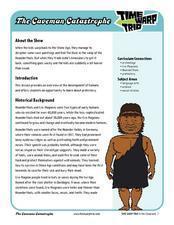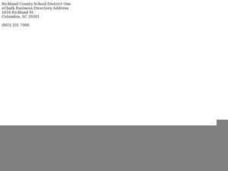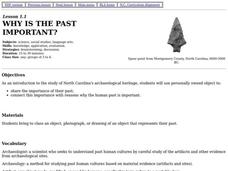Curated OER
Cave Art: Discovering Prehistoric Humans through Pictures
Students explore how people in earlier times used art as a way to record stories and communicate ideas by studying paintings from the Cave of Lascaux and other caves in France. Three lessons on one page.
Time Warp Trio
The Caveman Catastrophe
Young archaeologists study the development of human history, and work in groups to create a timeline that traces the development of humans. Additionally, the groups utilize a very clever graphic organizer embedded in the plan in order to...
Curated OER
The First Humans: Prehistory-3500 B.C. "Lucy"
Students explore prehistoric times by completing web activities in class. In this human ancestry lesson, students identify the archaeological discovery of the "Lucy" skeleton and what it meant for science. Students investigate the Leakey...
Curated OER
Guidelines for Governing: Utopia and The Prince
Learners explore the power of the Church in government. In this literature lesson, students read Sir Thomas More's Utopia and Niccolo Machiavelli's The Prince. Learners respond to questions regarding the works and discuss them.
Curated OER
The Mystery of the Shoe Box
Sixth graders do the work of historians. In this world history lesson, 6th graders examine the artifacts and handouts in mystery boxes that their teachers prepare. Students collaborate to solve the mystery of their assigned boxes as they...
Curated OER
Why is the Past Important?
Fourth graders discuss the importance of North Carolina's archaeological heritage. They share with the class an object, photograph, or drawing of an object that represents their own or their family's past.
Curated OER
Past v. Present: Using Geography & Anthropology
Young scholars examine artifacts and documents from their Canadian community. They analyze early Canadian history and make predictions about the future of the country.








